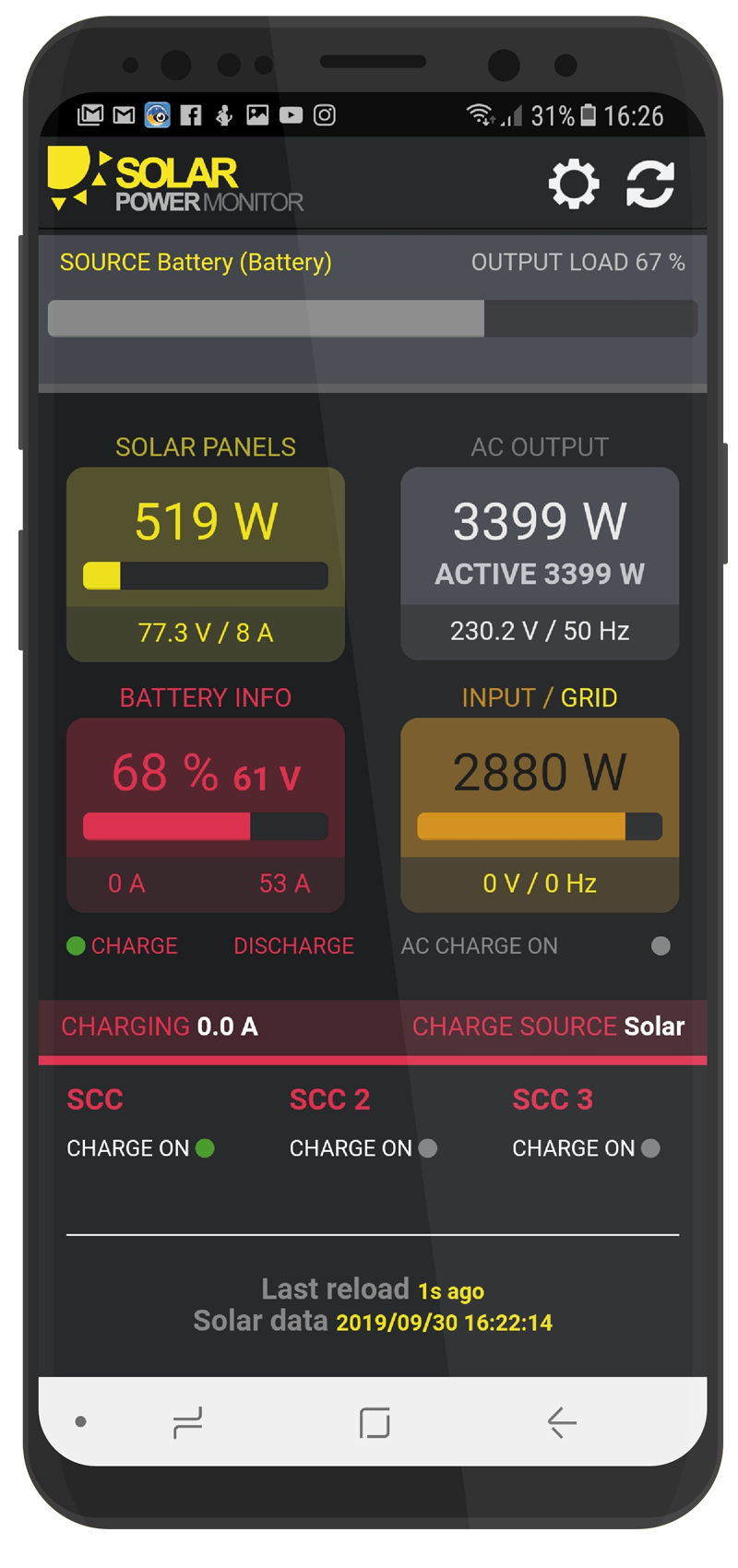Remote IoT monitoring Android is the future of connectivity, and it’s here to stay. Imagine being able to control your home appliances, monitor your business operations, or track your health stats from the comfort of your smartphone. Sounds like science fiction? Nope, it’s the reality we live in today. With advancements in technology, IoT (Internet of Things) has seamlessly integrated with Android devices, offering users unparalleled convenience and control. Whether you're a tech enthusiast, a small business owner, or someone looking to simplify daily tasks, remote IoT monitoring Android has something for everyone.
Let’s dive into what makes this technology so groundbreaking. Picture this: you're on vacation in Bali, but you want to ensure your smart thermostat back home is set to save energy. With remote IoT monitoring Android, you can do exactly that. The best part? It’s not just limited to home automation. From agriculture to healthcare, the applications are endless. This isn’t just about convenience; it’s about transforming the way we interact with our surroundings.
But why stop at the basics? In this article, we’ll explore everything you need to know about remote IoT monitoring Android. From understanding the technology to implementing it in your daily life, we’ve got you covered. So, buckle up and let’s unravel the magic of IoT and Android working hand-in-hand.
Read also:Charlamagne Tha God Wife The Untold Story Behind The Power Couple
What Exactly is Remote IoT Monitoring Android?
Remote IoT monitoring Android refers to the ability to monitor and control IoT devices using Android-powered smartphones or tablets. Think of it as a bridge between your physical devices and your digital world. The concept revolves around connecting everyday objects to the internet, enabling them to send and receive data in real time. This data can then be accessed and managed remotely via an Android app.
For instance, if you have a smart irrigation system in your farm, you can monitor soil moisture levels, weather conditions, and water usage through your Android device. Similarly, if you’re managing a warehouse, you can track inventory levels, temperature, and humidity without physically being present. The possibilities are endless, and the technology is only getting smarter.
How Does It Work?
The magic happens through a combination of sensors, connectivity protocols, and cloud computing. Here’s a simplified breakdown:
- Sensors collect data from the environment, such as temperature, humidity, or motion.
- This data is transmitted via Wi-Fi, Bluetooth, or cellular networks to a central hub or cloud server.
- The server processes the data and sends it to your Android device, where you can view and interact with it using a dedicated app.
It’s like having a personal assistant that keeps you updated on everything happening in your connected world.
Why Remote IoT Monitoring Android Matters
In today’s fast-paced world, time is of the essence. Remote IoT monitoring Android offers a solution that saves time, increases efficiency, and enhances security. Whether you’re managing a business or maintaining a smart home, having real-time access to data can make all the difference.
For businesses, this technology reduces operational costs by automating processes and minimizing human intervention. For individuals, it simplifies daily tasks and improves quality of life. Imagine never having to worry about forgetting to turn off the coffee maker or leaving the garage door open again. Remote IoT monitoring Android has got your back.
Read also:Seccedilkin Oumlzdemirs Current Partner A Deep Dive Into The Life And Relationships Of A Turkish Icon
Benefits of Remote IoT Monitoring Android
Here’s a quick rundown of the advantages:
- Convenience: Control devices from anywhere in the world.
- Cost Savings: Optimize energy usage and reduce waste.
- Increased Security: Monitor your property in real time.
- Improved Efficiency: Automate repetitive tasks and focus on what matters.
It’s no wonder why more and more people are embracing this technology. According to a report by Statista, the global IoT market is expected to reach $1.6 trillion by 2025. That’s a staggering number, and it highlights the growing demand for IoT solutions.
Applications of Remote IoT Monitoring Android
Now that we’ve covered the basics, let’s explore some real-world applications of remote IoT monitoring Android:
Smart Homes
Smart homes are one of the most popular use cases for remote IoT monitoring Android. From controlling lighting and temperature to monitoring security cameras, everything can be managed from your smartphone. Apps like Google Home, Amazon Alexa, and Samsung SmartThings offer seamless integration with Android devices, making it easier than ever to create a connected living space.
Healthcare
In the healthcare industry, remote IoT monitoring Android is transforming patient care. Wearable devices can track vital signs such as heart rate, blood pressure, and glucose levels, sending the data to healthcare providers in real time. This enables early detection of potential health issues and improves overall patient outcomes.
Agriculture
Farmers are using remote IoT monitoring Android to optimize crop production. Sensors placed in fields can monitor soil moisture, weather conditions, and pest activity, providing valuable insights that help increase yield and reduce waste. With the global population expected to reach 9.7 billion by 2050, this technology could play a crucial role in feeding the world.
Challenges and Solutions
While remote IoT monitoring Android offers numerous benefits, it’s not without its challenges. Security concerns, compatibility issues, and high initial costs are some of the obstacles that need to be addressed. However, advancements in technology are paving the way for more secure, affordable, and user-friendly solutions.
For instance, encryption and multi-factor authentication are being implemented to enhance data security. Manufacturers are also working on creating standardized protocols to ensure compatibility across different devices. As the technology becomes more widespread, economies of scale will likely drive down costs, making it accessible to a broader audience.
Overcoming Security Concerns
Security is one of the biggest concerns when it comes to IoT devices. Hackers could potentially gain access to sensitive information or take control of connected devices. To mitigate these risks, experts recommend the following:
- Use strong, unique passwords for all devices.
- Enable two-factor authentication whenever possible.
- Keep software and firmware up to date.
- Be cautious when connecting to public Wi-Fi networks.
By taking these precautions, you can enjoy the benefits of remote IoT monitoring Android without compromising your security.
Getting Started with Remote IoT Monitoring Android
If you’re ready to dive into the world of remote IoT monitoring Android, here’s how you can get started:
Choose the Right Devices
The first step is selecting the right IoT devices for your needs. Whether it’s smart lights, security cameras, or health monitors, there are plenty of options available. Look for devices that are compatible with Android and offer robust security features.
Download the App
Once you’ve chosen your devices, download the corresponding app from the Google Play Store. Most IoT devices come with their own app, but some may integrate with popular platforms like Google Home or Samsung SmartThings.
Set Up and Configure
Follow the manufacturer’s instructions to set up and configure your devices. This usually involves connecting them to your Wi-Fi network and pairing them with the app. Some devices may require additional calibration or calibration.
And that’s it! You’re now ready to start monitoring and controlling your IoT devices from anywhere in the world.
Tips for Maximizing Your Remote IoT Monitoring Android Experience
Here are a few tips to help you get the most out of your remote IoT monitoring Android setup:
- Start small and gradually expand your setup as you become more comfortable with the technology.
- Regularly review your data to identify patterns and areas for improvement.
- Experiment with automation rules to streamline your daily routine.
- Stay updated on the latest trends and advancements in IoT technology.
By following these tips, you can create a personalized and efficient IoT ecosystem that meets your unique needs.
Future Trends in Remote IoT Monitoring Android
The future of remote IoT monitoring Android looks bright. With advancements in artificial intelligence, machine learning, and 5G technology, we can expect even more sophisticated and intelligent solutions. Imagine a world where your IoT devices not only collect data but also analyze it and make decisions on your behalf. This level of automation could revolutionize industries and transform the way we live and work.
Additionally, the rise of edge computing is expected to enhance the performance and security of IoT devices. By processing data locally rather than in the cloud, edge computing reduces latency and minimizes the risk of data breaches.
Conclusion
Remote IoT monitoring Android is more than just a trend; it’s a game-changer. From simplifying daily tasks to improving business operations, the possibilities are endless. By understanding the technology, embracing its applications, and addressing its challenges, you can unlock its full potential.
So, what are you waiting for? Take the first step towards a smarter, more connected future. Whether you’re a tech enthusiast or a curious beginner, remote IoT monitoring Android has something for everyone. Share your thoughts in the comments below, and don’t forget to check out our other articles for more insightful content.
Table of Contents
- What Exactly is Remote IoT Monitoring Android?
- Why Remote IoT Monitoring Android Matters
- Applications of Remote IoT Monitoring Android
- Challenges and Solutions
- Getting Started with Remote IoT Monitoring Android
- Tips for Maximizing Your Remote IoT Monitoring Android Experience
- Future Trends in Remote IoT Monitoring Android



